Tidal Power – IELTS Reading Answers
5 min read
Updated On
-
Copy link
Table of Contents

Limited-Time Offer : Access a FREE 10-Day IELTS Study Plan!
The Academic passage ‘Tidal Power’ is a reading passage that appeared in an IELTS Test.
Ideally, you should not spend more than 20 minutes on a passage. Let’s see how easy this passage is for you and if you’re able to make it in 20 minutes. If not, try more IELTS reading practice tests from IELTSMaterial.com
Tidal Power
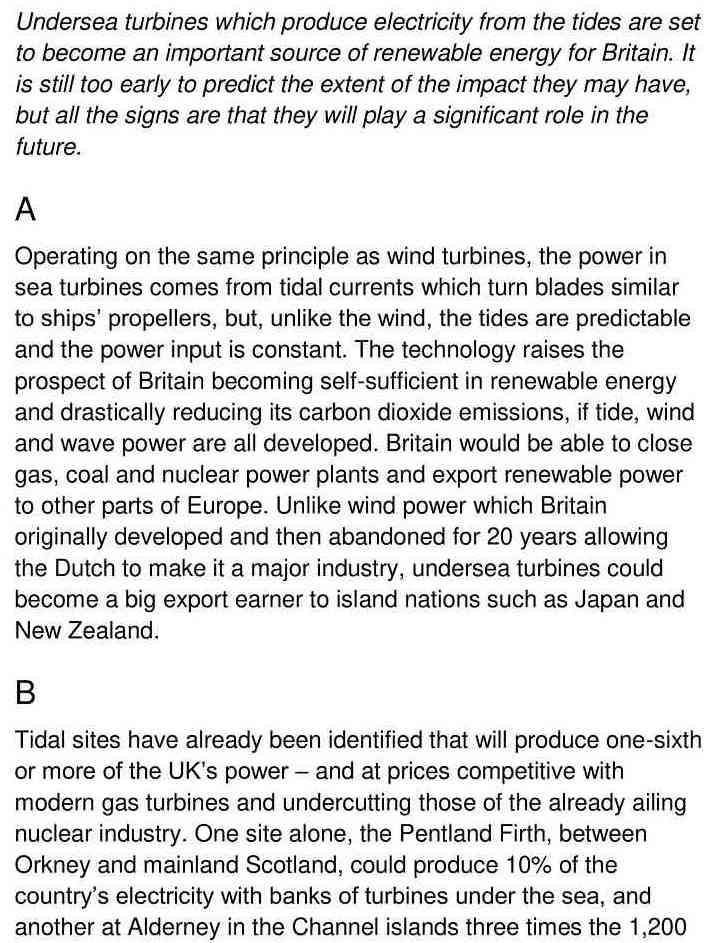

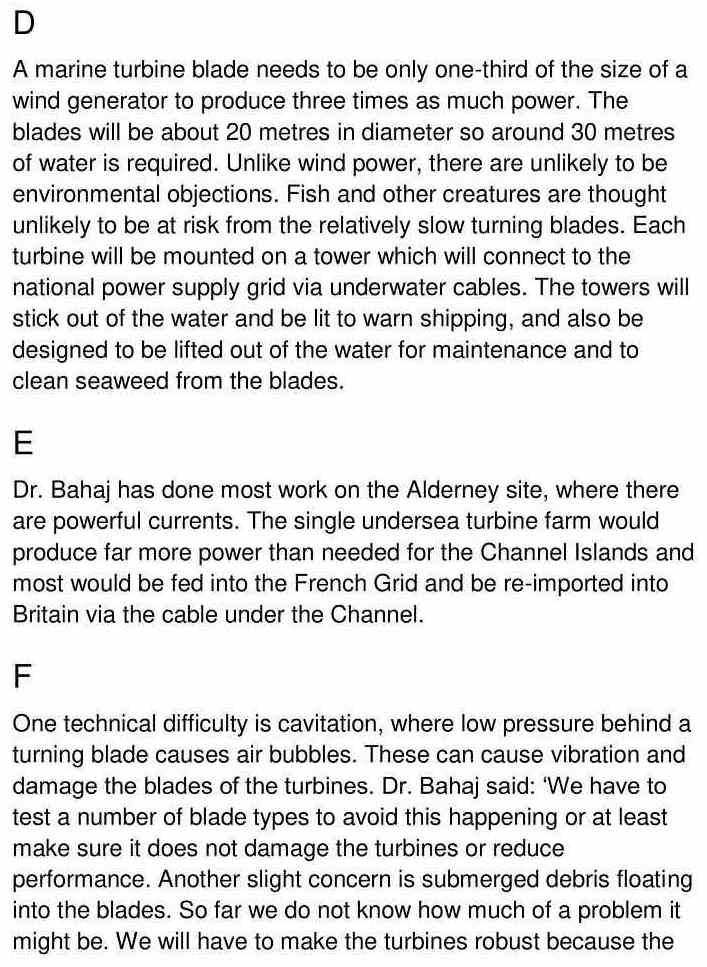
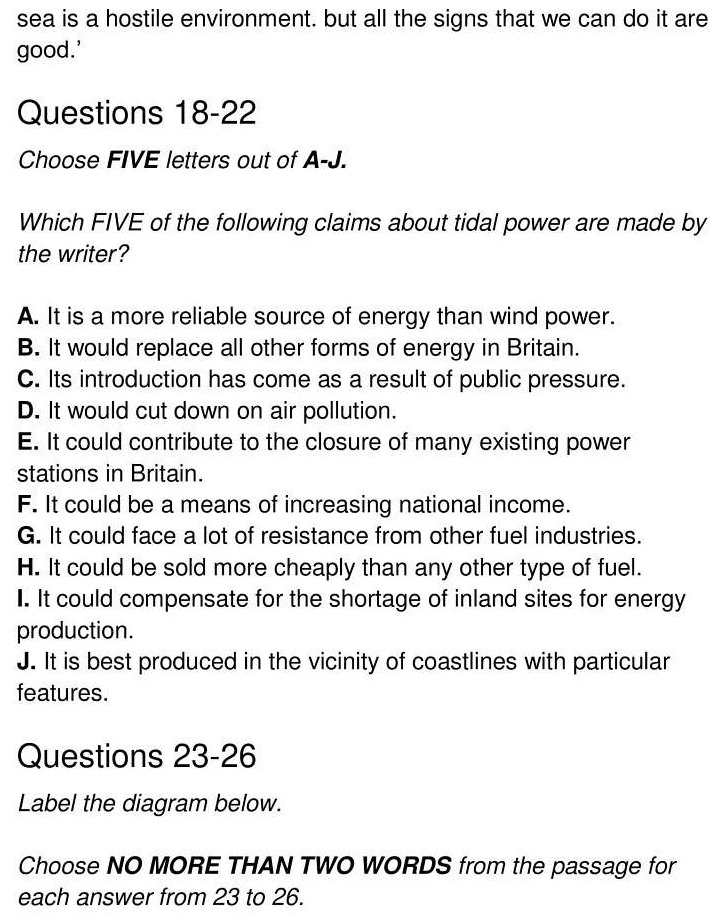
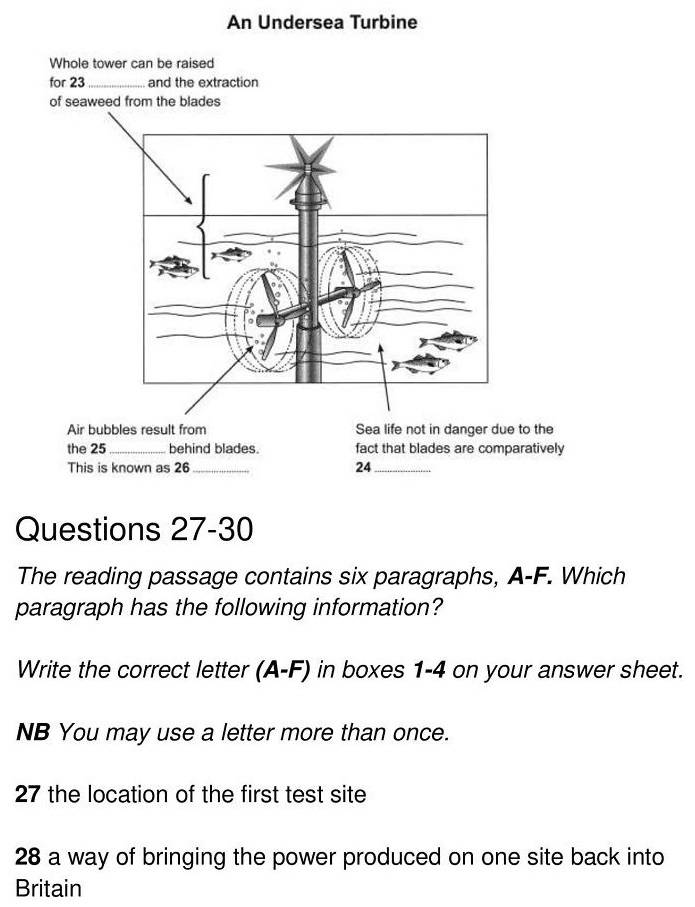

Answers
Unlock Answers
The answers to questions 18-30 are given below along with their explanations.
| Question Number | Answer | Explanation |
| 18 | A | Paragraph A points out that the power in sea turbines, operating on the same principle as wind turbines, comes from tidal currents which turn blades similar to ships’ propellers, but, ‘unlike wind’, ‘the tides are predictable and the power input is constant’ (more reliable).
Hence, the answer is A (It is a more reliable source of energy than wind power). |
| 19 | D | Paragraph A refers to the fact that the tidal technology raises the prospect of Britain becoming self-sufficient in renewable energy and ‘drastically reducing its carbon dioxide emissions’ (reduces pollution). Hence, the answer is D (It would cut down on air pollution). |
| 20 | E | In paragraph A, it is conveyed that if ‘tide, wind and wave power are all developed’, ‘Britain would be able to close gas, coal and nuclear power plants’ and export renewable power to other parts of Europe. Hence, the answer is E(It could contribute to the closure of many existing power stations in Britain). |
| 21 | F | Paragraph A mentions that if tide, wind and wave power are all developed, Britain would be able to close gas, coal and nuclear power plants and ‘export renewable power’ (increase national income) to ‘other parts of Europe’. Hence, the answer is F(It could be a means of increasing national income). |
| 22 | J | Paragraph C states that EU research has now identified ‘1GB potential sites for tidal power’, ‘80% round the coasts of Britain’ (vicinity of coastlines). The best sites are ‘between islands or around heavily indented coasts where there are strong tidal currents’ (particular features). Hence, the answer is J(It is best produced in the vicinity of coastlines with particular features). |
| 23 | Maintenance | Paragraph D relates that the towers will stick out of the water and be lit, to warn shipping, and also be designed to be ‘lifted out’ (raised) of the water ‘for maintenance’ and to ‘clean seaweed from the blades’ (extraction of seaweeds from blades). Hence, the answer is ‘maintenance’. |
| 24 | Slow | Paragraph D let out the fact that ‘fish and other creatures’ (sea life) are thought ‘unlikely to be at risk’ (not in danger) from the ‘relatively’ (comparatively) ‘slow-turning blades’. Hence, the answer is ‘slow’. |
| 25 | Low pressure | Paragraph F declares that one technical difficulty is cavitation, where ‘low pressure behind a turning blade’ ‘causes’ (results from) ‘air bubbles’. Hence, the answer is ‘low pressure’. |
| 26 | cavitation | Paragraph F informs that one technical difficulty is ‘cavitation’, where low pressure behind a turning blade causes air bubbles. Hence, the answer is ‘cavitation’. |
| 27 | C | Paragraph C states that the ‘first station is expected to be installed off Lynmouth in Devon’ shortly to ‘test the technology’ in a venture jointly funded by the department of Trade and Industry and the European Union. Hence, the answer is C. |
| 28 | E | Paragraph E points out that the single undersea turbine farm would produce far more power than needed for the Channel Islands and most would be fed into the French Grid and be ‘re-imported into Britain’ (bringing the power produced back into Britain) via the cable under the Channel.
Hence, the answer is E. |
| 29 | A | Paragraph A reveals that unlike ‘wind power, which Britain originally developed and then abandoned’ (previous attempt by Britain to find an alternative source of energy) for 20 years allowing the Dutch to make it a major industry, undersea turbines could become a big export earner to island nations such as Japan and New Zealand. Hence, the answer is A. |
| 30 | C | Paragraph C explains that the ‘technology for dealing with the hostile saline environment’ under the sea has been ‘developed in the North Sea oil industry’ (from another industry) and much is already known about turbine blade design, because of wind power and ship propellers. Hence, the answer is C. |
Check More IELTS Reading Answers
Also check :
Practice IELTS Reading based on question types

Start Preparing for IELTS: Get Your 10-Day Study Plan Today!
Recent Articles

Nehasri Ravishenbagam

Haniya Yashfeen

Haniya Yashfeen

Haniya Yashfeen
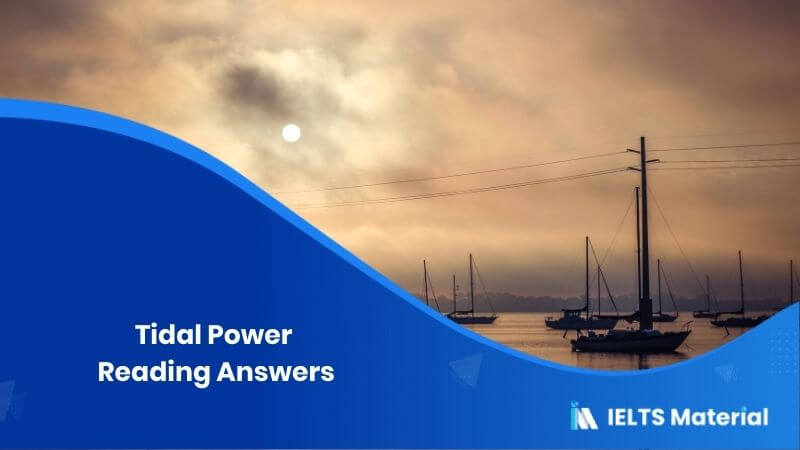



Post your Comments